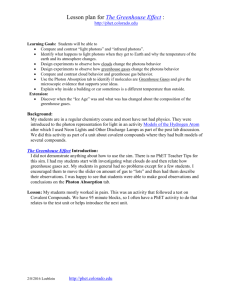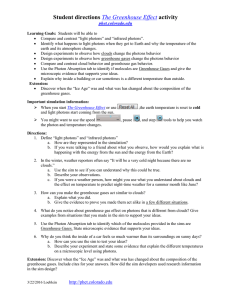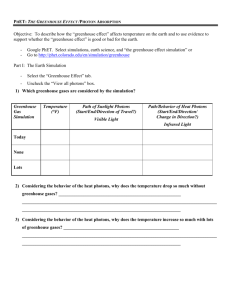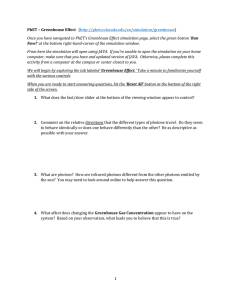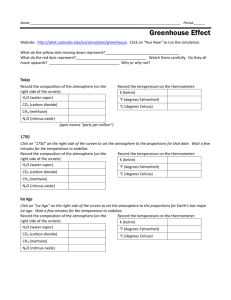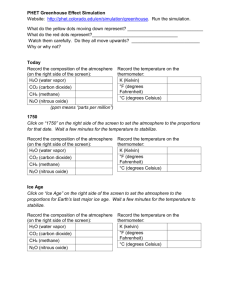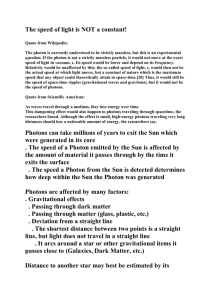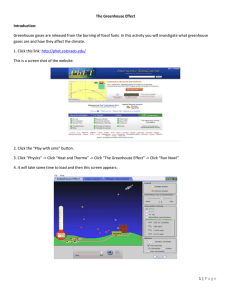The Greenhouse Effect
advertisement
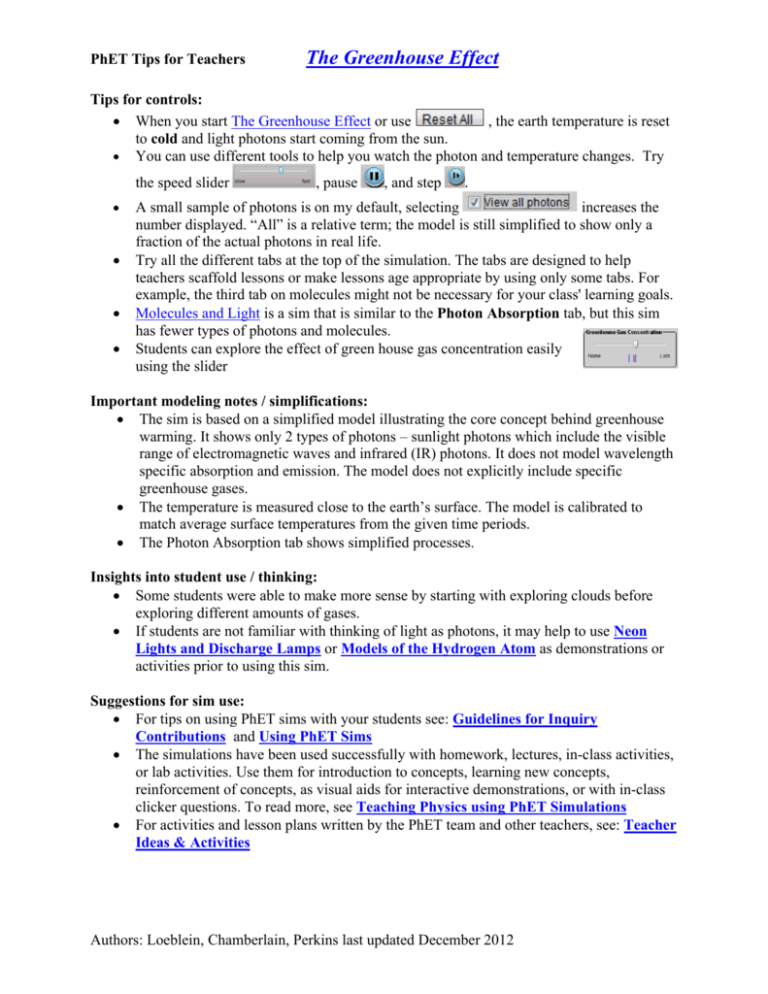
PhET Tips for Teachers The Greenhouse Effect Tips for controls: When you start The Greenhouse Effect or use , the earth temperature is reset to cold and light photons start coming from the sun. You can use different tools to help you watch the photon and temperature changes. Try the speed slider , pause , and step . A small sample of photons is on my default, selecting increases the number displayed. “All” is a relative term; the model is still simplified to show only a fraction of the actual photons in real life. Try all the different tabs at the top of the simulation. The tabs are designed to help teachers scaffold lessons or make lessons age appropriate by using only some tabs. For example, the third tab on molecules might not be necessary for your class' learning goals. Molecules and Light is a sim that is similar to the Photon Absorption tab, but this sim has fewer types of photons and molecules. Students can explore the effect of green house gas concentration easily using the slider Important modeling notes / simplifications: The sim is based on a simplified model illustrating the core concept behind greenhouse warming. It shows only 2 types of photons – sunlight photons which include the visible range of electromagnetic waves and infrared (IR) photons. It does not model wavelength specific absorption and emission. The model does not explicitly include specific greenhouse gases. The temperature is measured close to the earth’s surface. The model is calibrated to match average surface temperatures from the given time periods. The Photon Absorption tab shows simplified processes. Insights into student use / thinking: Some students were able to make more sense by starting with exploring clouds before exploring different amounts of gases. If students are not familiar with thinking of light as photons, it may help to use Neon Lights and Discharge Lamps or Models of the Hydrogen Atom as demonstrations or activities prior to using this sim. Suggestions for sim use: For tips on using PhET sims with your students see: Guidelines for Inquiry Contributions and Using PhET Sims The simulations have been used successfully with homework, lectures, in-class activities, or lab activities. Use them for introduction to concepts, learning new concepts, reinforcement of concepts, as visual aids for interactive demonstrations, or with in-class clicker questions. To read more, see Teaching Physics using PhET Simulations For activities and lesson plans written by the PhET team and other teachers, see: Teacher Ideas & Activities Authors: Loeblein, Chamberlain, Perkins last updated December 2012
